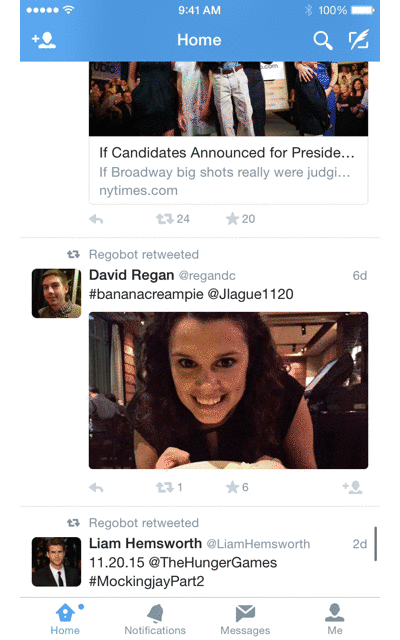Want smarter insights in your inbox? Sign up for our weekly newsletters to get only what matters to enterprise AI, data, and security leaders. Subscribe Now
Twitter announced today that it will now autoplay all native videos, GIFs, and Vines in timelines and across its site. The change has begun rolling out on iOS and the Web, and is “coming soon” to Android. The good news is you can opt out of this change in your account settings.
Much like on Facebook, when you scroll through your Twitter timeline, videos will begin to automatically play, but they’re muted. Clicking on the video, or turning your device into landscape mode, will keep the content playing in the full-screen viewer and turn on the sound.
Twitter isn’t changing the experience with videos in tweets. You can still retweet, favorite, or comment on the video at any point.
Twitter is, however, changing how videos look today as well. They will now appear in a larger and “more media-centric format” in timelines. The company explains that this is all about engagement: During its autoplay testing, Twitter found users engaged with videos in this new format at a much higher rate, and its brand and publishing partners saw higher view rates.
The tests also apparently found the following:
- People were 2.5X more likely to prefer autoplay videos over other viewing methods (including click-to-play and video preview thumbnails).
- Users have better video recall with autoplay. In fact, Twitter saw a 14 percent lift in video recall over other video formats.
- Brands saw a sevenfold increase in completions of Promoted Videos.
In other words, autoplay videos resulted in a lower cost-per-views for marketers. Again, just like Facebook, this is all about advertising. In that vein, Twitter also outlined how it will now charge brands for a video view.
“Starting today we’ll only consider a view on Twitter chargeable when a video is 100 percent in-view on the user’s device, and has been watched for at least 3 seconds,” the company said. “We’re putting this standard of 100% viewability in place because we think it’s simply the right thing to do. If a video is not 100% in-view, we don’t think an advertiser should be charged.”
Twitter also plans to work with multiple third-party verification vendors so advertisers can be satisfied that their promoted video on Twitter is actually reaching users. The company says it is in active discussions with both Nielsen and Moat.



